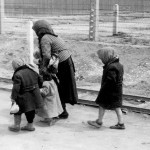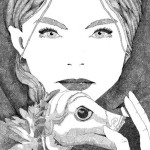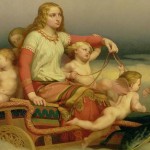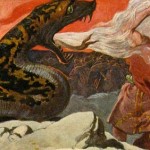“I, King, have dealt with the Gods for three generations of men, and I know that they dazzle our eyes and flow in and out of one another like eddies on a river, and nothing that is said clearly can be said truly about them.” C. S. Lewis, Til We Have Faces
In ADF we refer to the “Kindreds”, the three classifications of spiritual beings that we honor and work with in our rituals. The three categories of Kindred are the Ancestors, the Nature Spirits, and the Shining Ones. By and large all three have some representation in most Indo-European Pagan cultures and their practice and worship. I’ll explain how they tie in to my personal theology later; for the moment let me describe them and my understanding of them in general as well as with an eye to Norse Hearth Culture (in ADF we often associate with a particular Indo-European culture for the purposes of study, worldview, and practice, called our “Hearth Cultures”).
The Ancestors
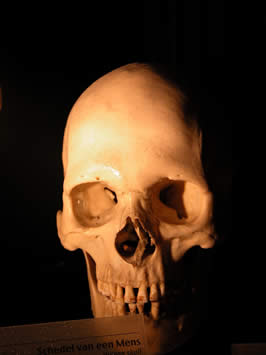
The Ancestors are venerated in most cultures across the globe. The term “ancestor” literally refers to those of your physical lineage; those whose blood runs through your veins. It is widely believed that of all categories of spiritual beings, they are the ones most likely to take interest in your day-to-day activities and the ones who care the most directly about you.
In Heathenry the Ancestors are given a special place of veneration. They are often those called upon first in any sort of rite as they are kin and Germanic Paganisms hold the value of familial bonds in high regard. In the Eddas and Sagas we see great importance placed on your direct ancestors as well as those married in to your blood line; all seem to be honored together.
There is a tendency in modern Heathenry to compartmentalize them into Alfar (male ancestors) and Disir (female ancestors). This is not part of my practice or belief for a multitude of reasons. First and foremost, as a transgender person I am aware that there are and have always been people who do not identify as either male or female (what we often refer to nowadays as “nonbinary” people). The sharp gender divide excludes them as Ancestors just as sharp gender divides exclude them from participation in many activities and organizations nowadays. In addition, I have found far more reference to the Alfar as nonhuman supernatural beings in the Eddas and Sagas (such as Delling, the Red Elf of Dawn) and there have been recent discussions that have suggested that either “Alf” was a synonym for “Van” (one of the primary tribes of Norse Gods) or an entirely different classification of divine beings. As for the Disir, while they do seem to encompass some of the female dead, human ancestors are not the only figures given that title. I believe that the confusion arises from the fact that the feminine protective spirits that are the Disir are often inherited or carried along family lines.
In addition, this system leaves little room for veneration of the dead that are not direct ancestors or ancestors by marriage. There are many dead heroes who are honored throughout the Sagas as well as in our modern daily life and I feel that having no legitimate category for them excludes an important part of human veneration for the dead.
As my understanding of the dead does not fit well within the Hearth culture that I have chosen to practice, I have had to adopt compromises in my practice. I honor the Ancestors of Blood; those of my family line and those who were married or otherwise bonded to them. I also honor the Ancestors of Heart; the Beloved Dead, those who I have loved in life who may not have been direct ancestors of mine but who have passed on from this world. The dead who I have not known personally but whose words and actions have inspired me I refer to as Ancestors of Spirit, or Heroes, and they receive my veneration and offerings as well.
The dead cling to us; we have a unique connection to them in that what we are now, they once were. The Ancestors surround us, as they have interest in what goes on in the halls of the living. The Ancestors care about us and respond to us, as we are their current physical connections to this world. We are their eyes and ears and hands and mouths in both a literal and metaphysical fashion.
The Nature Spirits
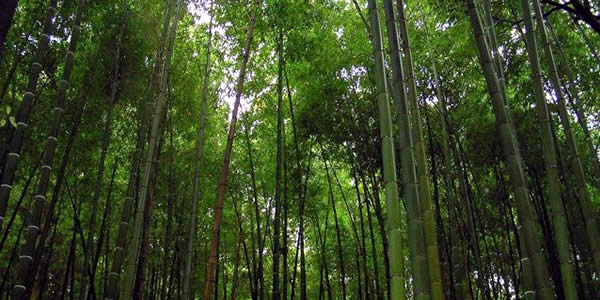
It is not unusual to come to a natural place and feel a powerful presence there. Even when alone, it seems that the very air around you is listening and paying attention to you. This is a sign of the attention of the Nature Spirits, those spirits tied to locations and aspects of the natural world.
Most Indo-European cultures acknowledge spirits of individual locales. The Germanic cultures held them in high regard as well, with the Norse referring to them as landvaettir (or land-wights) and making offering to them and attempting to heed their wisdom.
I find this category frustrating because often it seems to be used as a catch-all for those who are neither fish nor fowl, so to speak. There are many spirits of different types that are spoken of in our mythologies that do not fit aptly into any of the categories provided, and in ADF practice I often see them relegated to the status of Nature spirits. Among the Germanic and Scandanavian cultures there are many hosts of these beings from the huldafok (or hidden people) to the Alfar (again, the name is used in many different contexts), the mosswives (who lead men to their doom through their comely but ultimately hollow bodies) and the dveger (the dwarves who dwell beneath the earth, misshapen crafters of great skill).
While I understand how many of these beings do not fit well into the other categories, I do not associate them with “Nature Spirits” simply because they (often, but not always) dwell outside the bounds of human civilization. When I think of land spirits I think of beings tied to particular locations, or those who watch over particular breeds of animal or varieties of vegetation. I share the world with them, as I walk through their terrain every day; most houses have their own spirits, as well as the land that they are on and the region that they are in. In addition, there is suggestion among modern spirit-workers who spend time building ties with them that there is some kind of local hierarchy, something that I have experienced in my own practice when working with the nature spirits of the Genesee Valley.
The Shining Ones
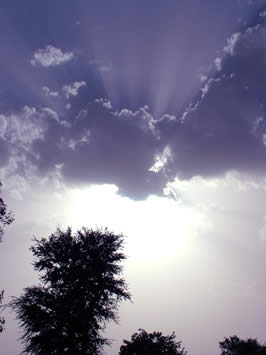
“Shining Ones” is a term that we use for the mighty Gods, beings of great power and (often) wisdom, whose wills and powers shake the world around them and change the world. Nearly every culture has analagous beings, often described in very human terms of tribe and lineage, of personality and connection.
Among the Norse there were two primary tribes of Gods: the Aesir and the Vanir. The Aesir have been described by some as Gods of civilization; many of their qualities and stories relate to aspects of human life such as sovereignty, poetry, and war. The Vanir have been described as Gods of Nature, as those whom we know of are venerated in prayers for fertility, prosperity, love, and weather.
I am personally distrustful of the “God of X” construct. I prefer to try and know a God through lore and direct experience rather than reducing them to what feels like a mail-order catalogue list of attributes that they are called upon for. Thus the distinction of “Gods of Nature” and “Gods of Civilization” falls flat for me. The Vanir are Gods who work with more than just the cycles of the world; Freyja is a lady whose powers of magic are well known and whose ties to war are indisputable, Freyja, Freyr, and Njord are all associated with gold and material wealth, and in the one line that refers to him as such Heimdall is said to be skilled in foresight “like the other Vanir”. The Aesir are likewise more than mere “Gods of Civilization”; Thor’s power is tied to the thunders that shake our heavens, and Odhinn provides breath and is considered by some to be a master of the wind itself, Gefion brings about the good from the Earth and Hodur is often called a God of winter and darkness. When personal stories and attributes of the Gods are investigated, these simplified tags that we use to describe them tend to lose their significance. They are all powerful, complex beings in their own rights.
Personal Theology and Understanding
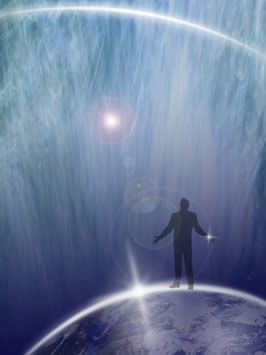
My personal communion with the land spirits has provided me with an understanding and perspective that has helped to tie things together for me. At one point while sitting with them I asked why it felt like I was two things; why I was sure that my body was of this earth but that there was a part of me that no matter what felt separated from the physical aspects of this world.
Many parts of their explanation go beyond the scope of this essay. However, parts of it helped me to understand the world in ways that I hadn’t before. It gave me perspective on spiritual matters that revealed an underlying theme in my polytheism. The spirits claimed explained that the divisions we make are based wholly on our perspective. Where we see different varieties of spirits, they understand as the same sort of being at different stages of their development and existence.
To the vaettir I spoke with, an Ancestor was merely a spirit who had done time as a human being. A God was a powerful spirit (or perhaps many spirits who answered to the same name and had similar goals). A land spirit was a spirit who inhabited a part of the land. Some Nature spirits were spirits that had incarnated as animals or who watched over plants. Some spirits fit into parts of the Universe that we as living humans have no connection to or cannot even comprehend. Different spirits did different things over the course of their existence, and the vaettir alluded to some Great Dance of the spirits, as they changed roles or performed different tasks over time.
Living humans fit in too, part of us is a spirit bound into flesh. This explains why sometimes dead humans may become Gods, how Gods can become incarnate as humans, how humans may become associated with the spirits of the land, how a living human may feel that they were once a wolf, and many more things. We spirits change positions in the dance, and while those positions influence our history and other qualities we are not limited to single roles. We flow endlessly around and through one another, incarnating and discarnating and choosing or being assigned roles by some authority or authorities beyond my ken.
We are all part of the same dance and process, and the inner part of us is shared with the mightiest of Shining Ones as well as the baby born this very moment. That does not mean that our roles are irrelevant; far from it – they are valuable and powerful and important for us to carry out. We are separate and discrete entities, except that we may take the same role as others at points in our existence. We are all different, except that those differences are defined by the functions that we take on. We are all the same, in that we come from the same place and dance the same dance as the rest of the spirits, though when we clothe ourselves in flesh or other substances the whole of the dance becomes more difficult for us to see.
It is right that we call them Kindred as well as the Kindreds, because we are all of a kind, just holding different positions at this time. They are our kin, our family, and ourselves.
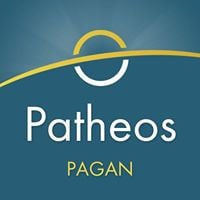
Patheos Pagan on Facebook.
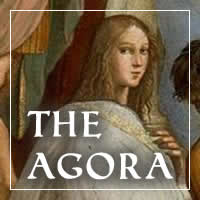
the Agora on Facebook
The Lady’s Quill is published on the second and fourth Thursday of every month. You can subscribe by RSS and e-mail.
Please use the links to the right to keep on top of activities here on the Agora as well as across the entire Patheos Pagan channel.






